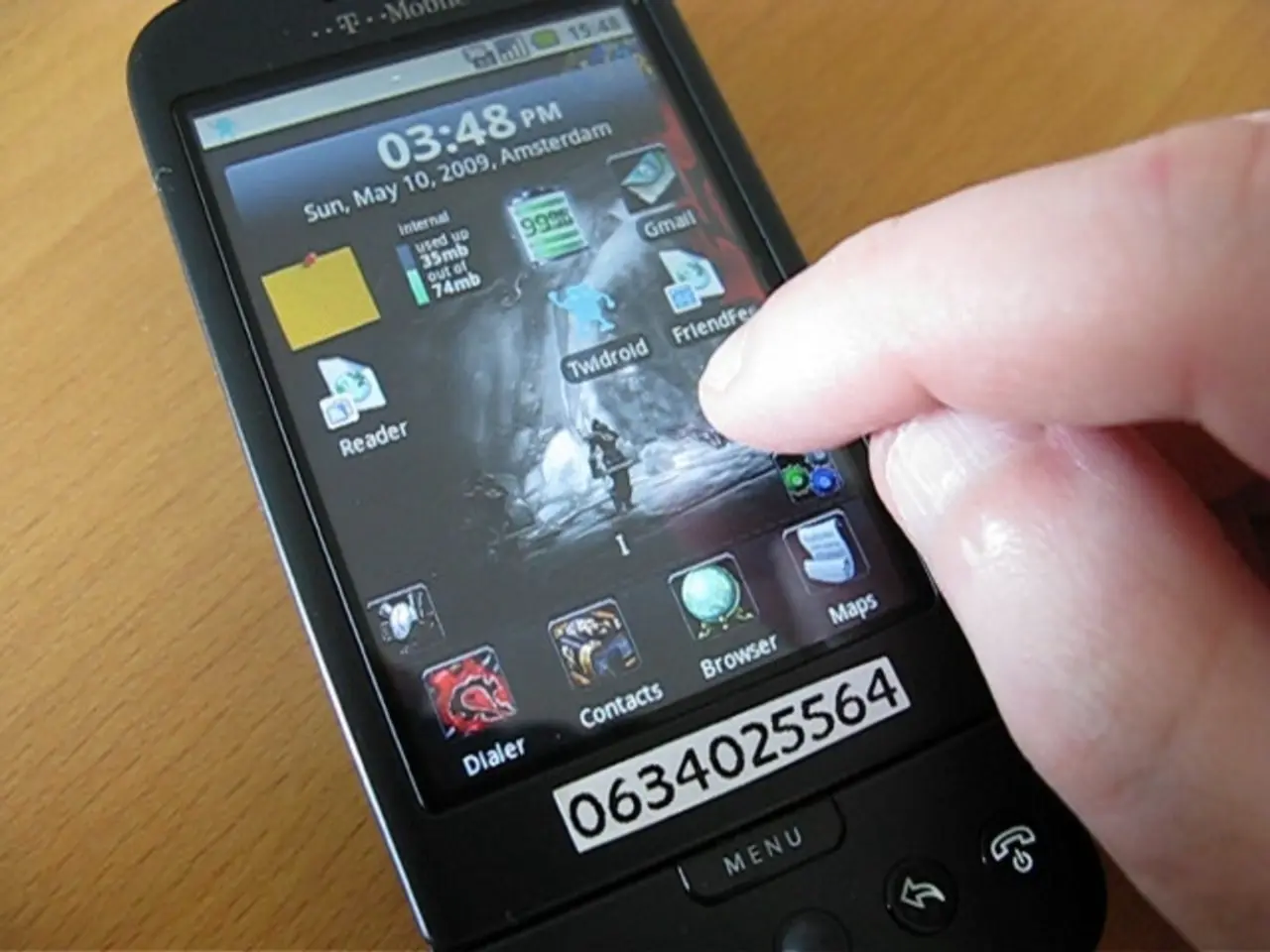Safeguard Your Phone from Hackers and Maintain Online Privacy
In today's digital world, securing our devices from potential threats has become more important than ever. This article offers practical advice on how to identify signs of hacking on your iPhone or Android device and the steps to remove malware and hacking.
Identifying Hacking Signs
Hacking on your iPhone or Android device may present various symptoms, including a sudden increase in data usage, persistent pop-ups, rapid battery depletion, erratic app behavior, unfamiliar calls or messages, unknown apps appearing on your phone, and unexpected activation of camera or microphone indicator lights on iPhones. For Android devices, unusual app crashes, freeze-ups, or apps opening by themselves can also be indicators of a malicious intrusion [1][3].
Removing Hacking and Malware from Android Devices
To remove hacking or malware from your Android device, follow these steps:
- Restart your phone in safe mode to disable third-party apps.
- Identify and uninstall suspicious or recently installed apps one by one.
- Use a reputable antivirus app to perform a full scan of your device.
- Power off the phone immediately after detecting malware to prevent spread and research the offending app for removal steps.
- Factory reset your device if problems persist after app removal [2][5].
Removing Hacking from iPhone Devices
To remove hacking from your iPhone, take the following actions:
- Delete unfamiliar apps manually.
- Change all passwords associated with your phone and important accounts.
- Update your iOS to the latest version to patch vulnerabilities.
- Restore your iPhone to factory settings if you suspect persistent compromise.
- Review app permissions (camera, microphone, etc.) to detect unauthorized access [1][3].
Preventative Measures
Both platforms benefit from keeping their operating systems and apps updated, avoiding suspicious links/downloads, and using strong security settings to prevent further hacking [1][3][4]. Enabling automatic updates on Android and iPhone can help ensure rapid security updates. For Android users, it's also recommended to enable Google Play Protect to scan apps for malicious code.
Summary of Key Signs and Removal Methods
| Signs of Hacking | Removal Steps for Android | Removal Steps for iPhone | |-------------------------------------|---------------------------------------------------|------------------------------------------------| | Sudden data usage spike | Safe mode restart | Delete unknown apps | | Persistent pop-ups | Uninstall suspicious apps | Change passwords | | Rapid battery drain | Antivirus full scan | Update iOS | | Unfamiliar calls/messages | Turn off and research malware app | Factory reset if needed | | Unknown apps | Factory reset if problems persist | Review and restrict app permissions | | Camera/mic indicator lights activated | | |
Expert Advice
Luigi Oppido, with over 25 years of experience in general computer repair, data recovery, virus removal, and upgrades, offers the following tips:
- Use secure and unique passwords for your accounts.
- Regularly back up your data to prevent data loss during removal processes.
Luigi is the host of the Computer Man Show! broadcasted on KSQD and the Owner and Operator of Pleasure Point Computers in Santa Cruz, California.
FAQ
- How can I check if call forwarding is enabled on my iPhone or Android device? Dial *#21# to run the MMI code and see if call forwarding is set up through your carrier.
- How can I turn off call forwarding on my iPhone or Android device? Dial ##002# to turn off call forwarding on both devices.
- What should I do if *73 or ##002# doesn't work to turn off call forwarding on my phone? Contact your carrier for further assistance.
- How can I enable automatic updates on my Android device? Go to Settings > Software update > Download and install.
- This article has been fact-checked to ensure accuracy and reliability.
[1] Safety Detective [2] Norton [3] TechRadar [4] Kaspersky [5] Malwarebytes
To fortify your iOS or Android device's cybersecurity in the digital age, consider learning how to recognize the signs of hacking such as sudden data usage spikes, persistent pop-ups, rapid battery drain, and unfamiliar calls or messages. In instances of hacking, it's essential to follow proper removal steps like safe mode restart, antivirus scans, and app deletion, depending on your device. To prevent such occurrences, ensure you keep your operating systems and apps updated, steer clear of suspicious links or downloads, and leverage strong security settings to safeguard your data.




